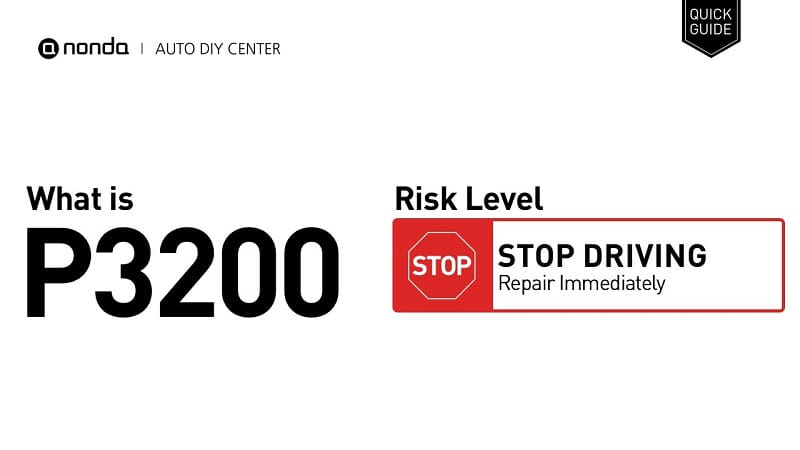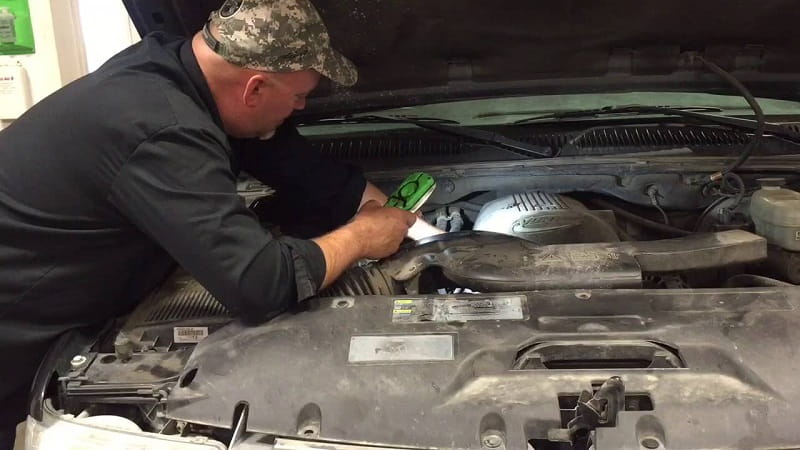This post contains affiliate links. This means I will make a commission at no extra cost to you should you click through and make a purchase [ “As an Amazon Associate, I earn from qualifying purchases.” ]. Read the full disclosure here.
Understanding P3200 Manufacturer Controlled DTC: A Deep Dive into Hybrid System Diagnostics GuideMechanic.Com Modern vehicles have become more technologically advanced, especially with the rise of hybrid and electric powertrains.
These systems require intricate communication between multiple control units and sensors to ensure proper operation.
When something goes wrong, Diagnostic Trouble Codes (DTCs) help identify and isolate the issue. Among manufacturer-specific codes, P3200 stands out as a code primarily related to hybrid control system issues, most commonly found in Toyota and Lexus hybrid vehicles.
This article provides an in-depth look at the P3200 DTC, what it means, its typical causes, diagnosis process, and recommended repair steps.
See Also: P3300 Manufacturer Controlled DTC
P3200 Manufacturer Controlled DTC
What Is the P3200 Code?

DTC P3200 is a manufacturer-controlled trouble code that generally refers to a malfunction within the hybrid control system, especially the inverter and motor assembly or communication issues involving the power management control ECU.
In hybrid vehicles like the Toyota Prius, Highlander Hybrid, and Lexus RX400h, this code often signals a fault in the inverter assembly, motor generator (MG1 or MG2), or related power electronics.
It’s important to note that P3200 is not a generic OBD-II code. Its interpretation can vary slightly between different hybrid models, and it is usually accompanied by INF codes (Information Codes) that provide specific details about the problem.
Where Is This Code Commonly Found?
The P3200 code is frequently seen in Toyota and Lexus hybrid models, including:
- Toyota Prius (2004–2015)
- Toyota Camry Hybrid
- Toyota Highlander Hybrid
- Lexus RX400h
- Lexus HS250h
- Toyota Estima Hybrid (Japan Market)
In these vehicles, the P3200 code usually indicates that the inverter system has malfunctioned or that there is a fault in the motor-generator circuits, affecting the vehicle’s ability to use electric power efficiently or safely.
Manufacturer-Specific Definition (Toyota Example)
According to Toyota service documentation, P3200 means:
- “HV ECU detects an internal malfunction in the inverter or inverter-related components.”
- This code is often linked with INF subcodes such as:
- INF 246: Malfunction in Motor Generator (MG2)
- INF 247: Inverter cooling system malfunction
- INF 264: Motor inverter internal error
These subcodes allow technicians to narrow down the issue, whether it’s a cooling failure, power transistor issue, or communication failure.
P3200 Manufacturer Controlled DTC
Symptoms of DTC P3200

When the P3200 code is triggered, the vehicle may exhibit one or more of the following symptoms:
- Check Hybrid System warning on the dashboard
- Reduced acceleration or limited power mode (limp mode)
- No ability to start or drive the vehicle
- Battery not charging properly
- Increased engine usage (limited EV function)
- Cooling fans running continuously
In some cases, the vehicle may shut down completely and fail to restart, especially if the inverter fails entirely.
Common Causes of P3200
Because P3200 is broad, its underlying causes can vary. Here are the most common ones:
Inverter Failure
The inverter is responsible for converting DC current from the hybrid battery into AC for the motor-generators. Internal damage or overheating can cause a fault.
Motor Generator (MG1 or MG2) Faults
Winding shorts, temperature sensor failure, or open circuits in MG1 or MG2 can result in improper power delivery.
Cooling System Issues
A failed inverter cooling pump or low coolant level can cause the inverter to overheat, triggering the code.
Communication Errors
Faulty wiring or poor connections between the Power Management Control ECU and the inverter assembly can disrupt normal operations.
Internal Short Circuits or Open Circuits
Damaged IGBTs (Insulated Gate Bipolar Transistors) inside the inverter or control board failures can trip system protection and trigger the code.
Software Errors
In rare cases, outdated software in the hybrid ECU may misinterpret signals, leading to erroneous codes.
P3200 Manufacturer Controlled DTC
Diagnosing the P3200 Code
Diagnosis should be performed with manufacturer-level scan tools, such as Toyota Techstream, that can access hybrid-specific systems and retrieve INF subcodes. Here’s a step-by-step guide:
- 1. Check and Record All DTCs
Use a scan tool to retrieve DTC P3200 and any associated INF codes or subcodes.
Record freeze frame data to understand conditions at the time of failure.
- 2. Interpret the INF Code
Identify whether the fault is in MG1, MG2, the inverter, or cooling system based on the subcode.
- 3. Visual Inspection
Check the inverter coolant reservoir.
Inspect wiring harnesses and connectors between the inverter, ECUs, and cooling pump.
Look for corrosion, frayed wires, or loose connections.
- 4. Test the Cooling System
Activate the inverter coolant pump using the scan tool and verify coolant flow.
Check for air bubbles, which may indicate airlocks or low coolant.
- 5. Measure Resistance and Voltage
Use a multimeter or megohmmeter to check motor-generator windings and verify continuity and insulation resistance.
- 6. ECU Communication
Confirm that the hybrid ECU can communicate with the inverter assembly and motor-generators.
P3200 Manufacturer Controlled DTC
Repair and Resolution Strategies
Once diagnosed, here are the most common repairs for resolving a P3200 DTC:
Inverter Replacement
If internal faults or thermal damage are detected, the inverter assembly may need to be replaced.
Some repairs involve replacing just the inverter board or IGBT components, but this is usually done by specialized technicians.
Cooling System Repair
Replace the inverter cooling pump if it’s not circulating coolant properly.
Refill and bleed the inverter cooling circuit.
Wire and Connector Repairs
Repair or replace any damaged wiring harnesses.
Clean or replace corroded connectors.
Motor-Generator Repair
If MG1 or MG2 are faulty, replacement of the transaxle or motor-generator assembly may be required.
ECU or Software Update
Reprogram or replace the hybrid control ECU if it fails self-tests or is determined to be the source of miscommunication.
Clear Codes and Test Drive
After repairs, clear DTCs and conduct a test drive under load conditions to confirm proper hybrid system operation.
P3200 Manufacturer Controlled DTC
Preventive Maintenance Tips
To avoid P3200 and similar hybrid-related DTCs, regular maintenance is essential. Here are some preventive steps:
- Inspect and maintain the inverter coolant system every 30,000–50,000 miles
- Check electrical connectors and battery grounds for corrosion
- Perform hybrid system health checks during scheduled services
- Update ECU software if manufacturer bulletins recommend it
Conclusion
The P3200 Manufacturer Controlled DTC is a critical warning related to the hybrid power control system, typically indicating an inverter, cooling, or motor-generator issue in hybrid vehicles.
Accurate diagnosis requires advanced tools and a solid understanding of hybrid system architecture, especially in Toyota and Lexus models.
Promptly addressing P3200 not only ensures the safety and reliability of the vehicle but also prevents further damage to expensive components like the inverter or motor-generators.
As hybrid vehicles become increasingly common, awareness of manufacturer-specific codes like P3200 becomes essential for technicians and hybrid vehicle owners alike.
- American Classic Pickup Trucks for Sale UK - December 6, 2025
- Old Classic Pickup Trucks for Sale Near Me - December 5, 2025
- Craigslist Used Small Trucks for Sale - December 4, 2025
